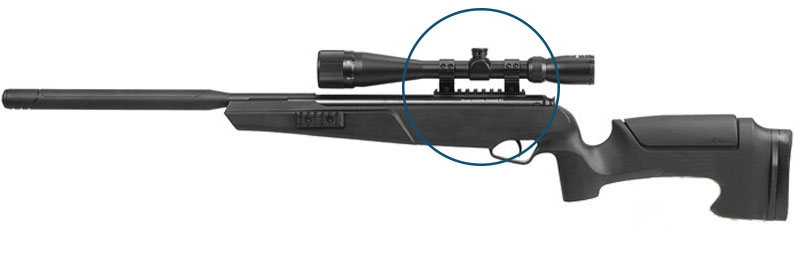What are the differences between Weaver rail and Picatinny rail ?
The rail is a mechanical fastening system placed on the body of a weapon. Made up of several notches, it allows the installation of various accessories such as a scope, a red dot sight or a front grip. The rail fastening system is available in different models depending on the size of the weapon and the accessories to be added. It can be installed on the weapon as a basic unit or can be retrofitted by the user.

The best known types of rails are the Weaver and the Picatinny (also called Swan / Weaver). Even if their notches are different, it is generally possible to fix the same accessory on one or the other of these rails (sometimes uncertain for the fixing of a Weaver accessory on a Picatinny rail).
History of the rail fastening system
The Weaver model is one of the first rail fastening systems. It was invented by William Ralph Weaver in 1975.
The Earl Reddick model designed by Reddicks Arms Development would be the second. Similar to the Weaver, however, it met more precise specifications with more transparent data on the shape and dimensions of the rail.
The Swan / Weaver model appears afterwards. It is named after its inventor: Dick Swan. The difference with the previous versions is the width of the notches: slightly larger than the other two. This new model is manufactured by Picatinny Arsenal, a Research & Development branch of the US Army. Hence its nickname of Picatinny rail! This device is at the origin of the MIL-STD-1913 (AR) standard which will be officially adopted by NATO and the US Army in 1995.
Characteristics of the Picatinny and Weaver track
Because of its many advantages, the rail has replaced the sights on many pistols, shotguns and crossbows and the handguard on rifles. It can be original or added by the owner of the weapon. The rail can equip firearms, non-lethal recreational weapons, paintball and airsoft weapons.
The rail is equipped with several notches that take the shape of a T and are about 5 millimetres thick and about 2 millimetres deep. The space between two notches is about 10 millimetres.
The difference between the Picatinny and Weaver rails lies in the width of the notches :
• approx. 5 millimetres for the Picatinny,
• approx. 4 millimetres for the Weaver.
The greater width of the notches increases the strength of the Picatinny rail.
When fired, both versions expand along the longitudinal axis of the weapon and thus retain their original shape despite the heat.
Fixing an accessory on a rail
The accessories are easily mounted on the rail: they are slipped on and then screwed in place so that they don't move. In some cases, they can be put in place with a wing screw, a lock or a lever.
More information on the Picatinny railway
Originally, the Picatinny rail was used in the army to mount rifle scopes on large calibre rifles. Later, it was used to install tactical lights, laser sights, night vision devices or bayonets on military weapons.
It was commissioned by the US army, which was dissatisfied with the rails used at the time. Designed by mechanical designer Gary Houtsma, it was put into service in 1995.
In 2009, an improved version of the Picatinny rail was designed in collaboration with several weapon manufacturers (Colt, Beretta, Aimpoint, Heckler & Koch, FN Herstal). It was approved by the NATO National Association of Attorneys General (NAAG).
At the Jean Pierre Fusil armoury, we offer many leisure weapons equipped with a mounting rail and Picatinny rails to be fixed on the weapons.
